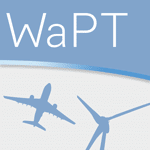The wake of an aircraft is composed, when fully rolled-up, of a pair of counter-rotating vortices that can live up to several minutes after the aircraft has flown by. The encounter with such a wake could be hazardous to any following aircraft. Hence, separation standards are imposed between aircraft, based upon this wake turbulence hazard. Nowadays, air traffic increase has made these wake vortex separation standards a limiting factor on the capacity of the busiest airports. Reducing the separation minima, while maintaining or even improving the safety level, hence represents a major economic interest for all market players: airports, aircraft manufacturers, Air Navigation Service Providers, air traffic safety regulators and airlines.
WaPT experts use their know-how and wake modeling tools to support the definition, the refinement and the certification of new operational concepts for Air Traffic Management (ATM). The application of these new concepts should allow air traffic controllers to cope with airport congestion issues.

